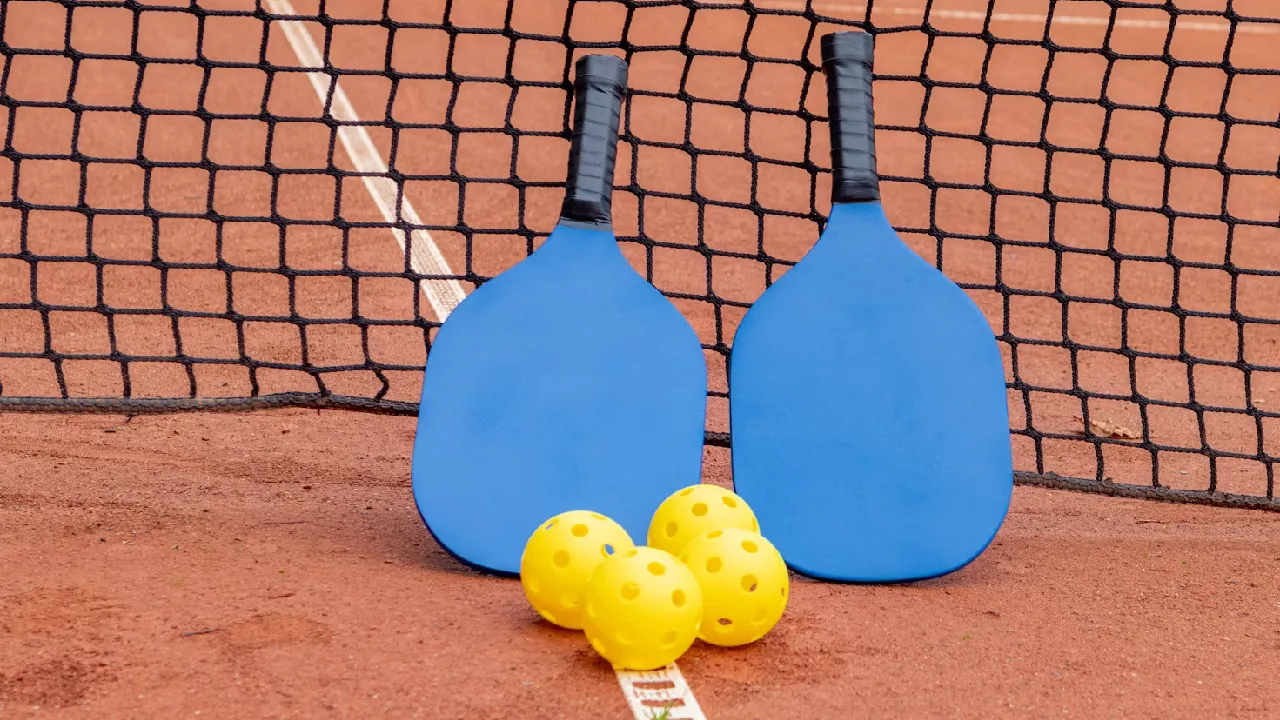Inside the Paddle - A Complete Guide to Pickleball Paddle Materials
When it comes to pickleball, the paddle is your most important piece of equipment. Not only does it connect you to every shot you make, but its construction, especially the materials used, directly affects power, control, touch, and even comfort. Whether you’re an absolute beginner or a seasoned tournament competitor, understanding pickleball paddle materials helps you choose the right paddle for your game style and budget. In this in-depth guide, we’ll break down everything you need to know about the various face, core, edge, and grip materials that go into modern paddles—and how those choices will impact your performance on the court.
Why Materials Matter
Every paddle is a balance of two main parts: the face (sometimes called the hitting surface) and the core. The face material determines how the ball reacts—how much spin you can generate and how much “pop” you feel—while the core material influences power, control, and feel. Beyond those, the edge guard and the grip material round out the paddle’s durability and comfort. By mixing and matching these components, manufacturers fine-tune paddles for different playing styles: power hitters, all-around players, and everything in between. Knowing which materials you prefer is the first step toward finding your perfect paddle.
Face Materials Overview
Fiberglass
Fiberglass faces have been a staple in mid-range paddles for years. They’re more forgiving than stiffer materials, offering a slightly softer feel on contact. That translates to easier control on dinks and slower rallies, making fiberglass a popular choice for beginners and recreational players. However, at high speeds, the surface can flex too much, absorbing power you might want on drives.
Graphite
Graphite faces are lightweight yet stiff, delivering crisp feedback and immediate response. Players who prioritize control and feel often choose graphite because it gives a direct connection to the ball—little flex means less energy loss on shots. On the flip side, graphite paddles tend to be more expensive and may feel unforgiving if you mishit away from the sweet spot.
Carbon Fiber
Carbon fiber faces combine stiffness and strength. Compared to plain graphite, carbon fiber often offers a slightly larger sweet spot and more consistent performance under heavy use. You’ll see carbon fiber on many premium paddles aimed at tournament players who demand both power and precision.
Composite Laminates
Some high-end paddles layer materials—like fiberglass over carbon fiber—to capture the best of both worlds. These composites can smooth out harsh feedback while retaining pop, but they tend to come at a price premium.
Core Materials Explained
Polymer (Polypropylene)
Polymer cores are the most common in recreational and mid-level paddles. Made of a honeycomb-style polypropylene, these cores deliver a quiet feel and steady control. They absorb shock well, so even hard drives feel muted, making long rallies more comfortable on your arm.
Nomex
Nomex cores use an aramid paper honeycomb, yielding a very stiff, powerful core. If you’re looking to launch blistering drives, Nomex gives that extra pop. The trade-off? More vibration on contact and a louder “crack” sound. Many aggressive players favor Nomex for its power, but if you have joint concerns, the vibration may be a drawback.
Aluminum Honeycomb
Aluminum cores strike a middle ground: less stiff than Nomex but more rigid than polymer. They produce solid power and a medium-firm feel. Aluminum cores can be heavier, though, so paddles using them often carry more weight overall.
Balsa Wood
Some specialty paddles use balsa wood cores. Balsa offers a unique, warm feel and outstanding touch—ideal for finesse players. However, it’s less durable and can break down faster under heavy play, so it’s usually reserved for niche, low-volume models.
The Role of Edge Guards and Construction
While face and core materials grab most of the attention, the paddle’s edge guard and overall build quality are vital for longevity. A sturdy edge guard protects against knocks and drops—inevitable in fast rallies. Thinner, lower-profile guards minimize weight and increase the hitting surface, but they may wear faster. High-end paddles sometimes use injection-molded frames or reinforced rails to reduce dead spots and maintain consistency across the face.
Grip Materials and Comfort
Your grip material completes the paddle’s feel in hand. Standard grips use synthetic perforated leather for sweat absorption and tackiness. Thicker cushioned grips damp vibration, which helps players sensitive to elbow or wrist pain. Overgrips allow you to fine-tune thickness, texture, and oil absorption as your needs change. If you have larger hands, look for models offering 4¼" to 4½" circumference grips; smaller grips (4") suit those with petite hands.
Power vs. Control: Material Trade-Offs
Power-Oriented Paddles: Usually pair fiberglass or carbon fiber faces with stiff cores like Nomex or aluminum. These setups maximize rebound speed but demand precise contact.
Control-Oriented Paddles: Often combine graphite faces with polymer cores, yielding a muted feel that enhances placement, spin, and consistency.
All-Round Paddles: Seek a balanced face-core combo (for example, fiberglass over carbon fiber atop a polymer core) to serve players who do everything from aggressive drives to soft dinks.
Your choice depends on natural style, physical comfort, and skill level. Beginners may find control paddles more forgiving, while advanced players might crave the extra zing of power-focused gear.
How to Choose Based on Skill Level
Beginners: Start with composite or fiberglass faces paired with polymer cores. These paddles are affordable, comfortable, and maximize your learning by reducing mis-hits.
Intermediate Players: Experiment with graphite faces and polymer or aluminum cores to fine-tune your balance of power and touch.
Advanced Players: Consider carbon fiber faces with Nomex cores for tournament-caliber pop and spin potential. Be ready for a steeper learning curve, as these paddles reward precision.
Demo programs at local clubs or retailers let you test different materials before committing.
Caring for Your Paddle Materials
Proper maintenance extends paddle life:
Keep it dry: Moisture degrades adhesion between layers. Wipe off sweat and store in a ventilated bag.
Avoid extreme temperatures: Don’t leave paddles in hot cars or outdoors in freezing weather, which can warp cores or delaminate faces.
Clean gently: Use a damp cloth on the face—no harsh chemicals. For grips, swap out overgrips regularly to maintain tack.
Innovations and Future Trends
Material science continues to push pickleball forward. Look for:
Reinforced nanocomposites: Ultra-light, ultra-strong faces that expand sweet spots.
Eco-friendly cores: Biodegradable polymers or recycled honeycomb structures.
Smart handles: Sensors embedded in grips providing shot data and impact analysis.
These emerging technologies promise ever-better performance while addressing durability and sustainability.
Final Thoughts
Choosing the right pickleball paddle materials boils down to matching face and core combos to your play style, comfort needs, and budget. Beginners often favor the soft forgiveness of fiberglass-polymer builds, while aggressive power hitters might gravitate toward carbon fiber-Nomex setups. Don’t overlook the edge guard and grip, which influence durability and feel in hand.
FAQs
1. What are the best materials for a pickleball paddle?
The best materials for a pickleball paddle depend on your playing style. Fiberglass offers soft control for beginners, graphite provides crisp touch for control players, and carbon fiber delivers strength and precision for advanced players.
2. How do face materials like fiberglass, graphite, and carbon fiber affect pickleball performance?
Fiberglass gives a softer feel with better control, graphite offers quick response and control, while carbon fiber provides a bigger sweet spot and higher durability for power and precision shots.
3. What is the most common core material in pickleball paddles?
The most common core material is polymer (polypropylene). It offers a quiet feel, absorbs shock well, and is ideal for both beginners and intermediate players.
4. Which pickleball paddle material is best for power players?
Power players often prefer Nomex cores combined with carbon fiber or fiberglass faces. This setup delivers maximum pop, power, and aggressive shot-making capabilities.
5. What pickleball paddle materials are best for control and touch?
For better control and touch, choose paddles with a graphite face and a polymer core. This combo gives a softer, more responsive feel for precision shots.
6. How important is grip material in a pickleball paddle?
Grip material is crucial for comfort and control. Synthetic perforated grips absorb sweat and improve hold, while thicker grips help reduce vibration for players with wrist or elbow sensitivity.
7. What should I look for when choosing a pickleball paddle for my skill level?
Beginners: Go for fiberglass faces with polymer cores.
Intermediate players: Try graphite faces with polymer or aluminum cores.
Advanced players: Choose carbon fiber faces with Nomex cores for maximum performance.
COMMENTS
Sort by :





Leave A Comment